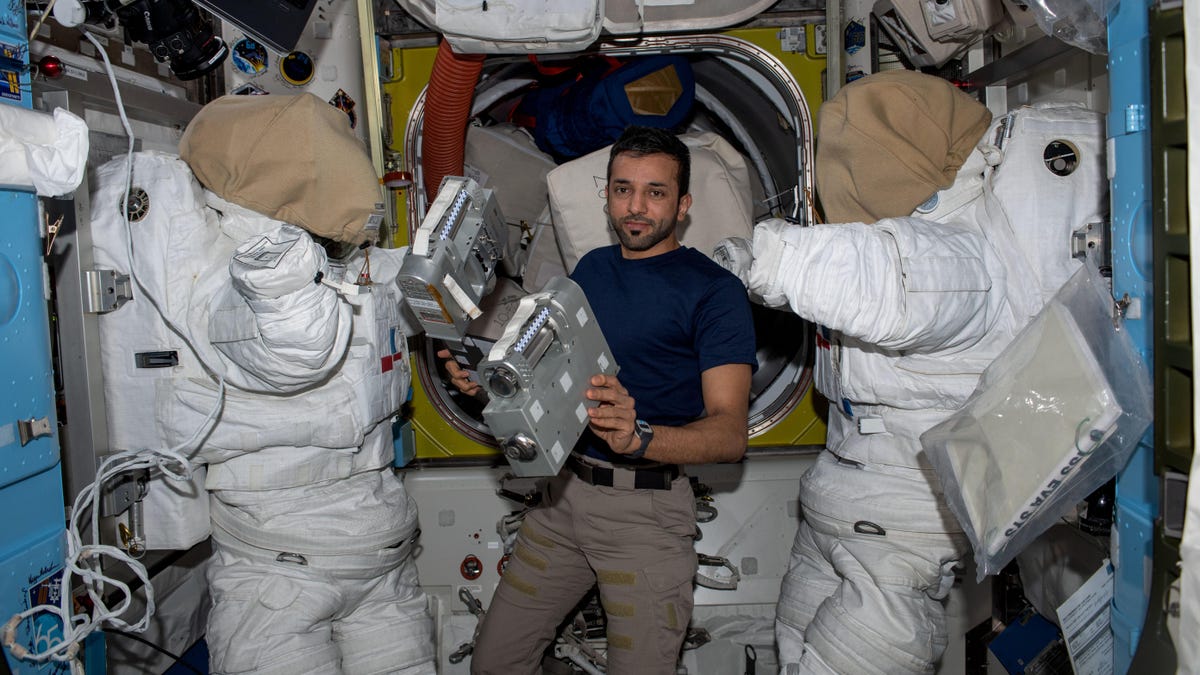
The International Space Station (ISS) has been home to more than 250 astronauts who have lived and worked on board the orbiting lab for months at a time. Unlike homes on Earth, however, the space station has been discovered to have higher levels of chemical contamination lingering in dust.
A group of scientists analyzed a dust sample from the air filters on board the ISS and found higher concentrations of potentially harmful chemical compounds than those found in floor dust in most American households. The latest findings were published Tuesday in Environmental Science and Technology Letters, and could have implications for the design of future space stations that will succeed the ISS.
Advertisement
Some of the contaminants found in the space dust, such as polycyclic aromatic hydrocarbons (PAH), perfluoroalkyl substances (PFAS), and polychlorinated biphenyls (PCBs), have been banned or their use has been limited due to their potential effects on human health. Some PAH, for example, could increase the risk of cancer. PFAS, also known as “forever chemicals,” are problematic on account of their persistence in the environment, potential for bioaccumulation, and association with various adverse health effects in humans.
The team of researchers behind the study, however, point out that while the concentrations of the chemicals found on the ISS were higher than those found in most homes, “levels of these compounds were generally within the range found on earth,” the scientists write.
Advertisement
Advertisement
How did these contaminants make their way to the ISS in the first place? It could be due to the use of inorganic flame retardants like ammonium dihydrogen phosphate to make fabrics and webbing on board the space station not flammable, the researchers suggest. The chemical contaminants could have also made their way to the ISS along with the astronauts, who sometimes board the space station with commercial devices like cameras, MP3 players, tablet computers, or clothing.
The ISS is equipped with a ventilation and contaminant removal system, which absorbs carbon dioxide and gaseous contaminants and recirculates the air eight to 10 times an hour. The researchers, however, are not exactly sure how efficient this system is at removing the chemical contaminants detected in the space station’s dust.
The ISS is set to retire in 2030, but the space station serves as a blueprint for the design of future orbital labs currently in the making. “Our findings have implications for future space stations and habitats, where it may be possible to exclude many contaminant sources by careful material choices in the early stages of design and construction,” Stuart Harrad, a researcher at the University of Birmingham, and co-author of the new paper, said in a statement.
For more spaceflight in your life, follow us on Twitter and bookmark Gizmodo’s dedicated Spaceflight page.
Services Marketplace – Listings, Bookings & Reviews